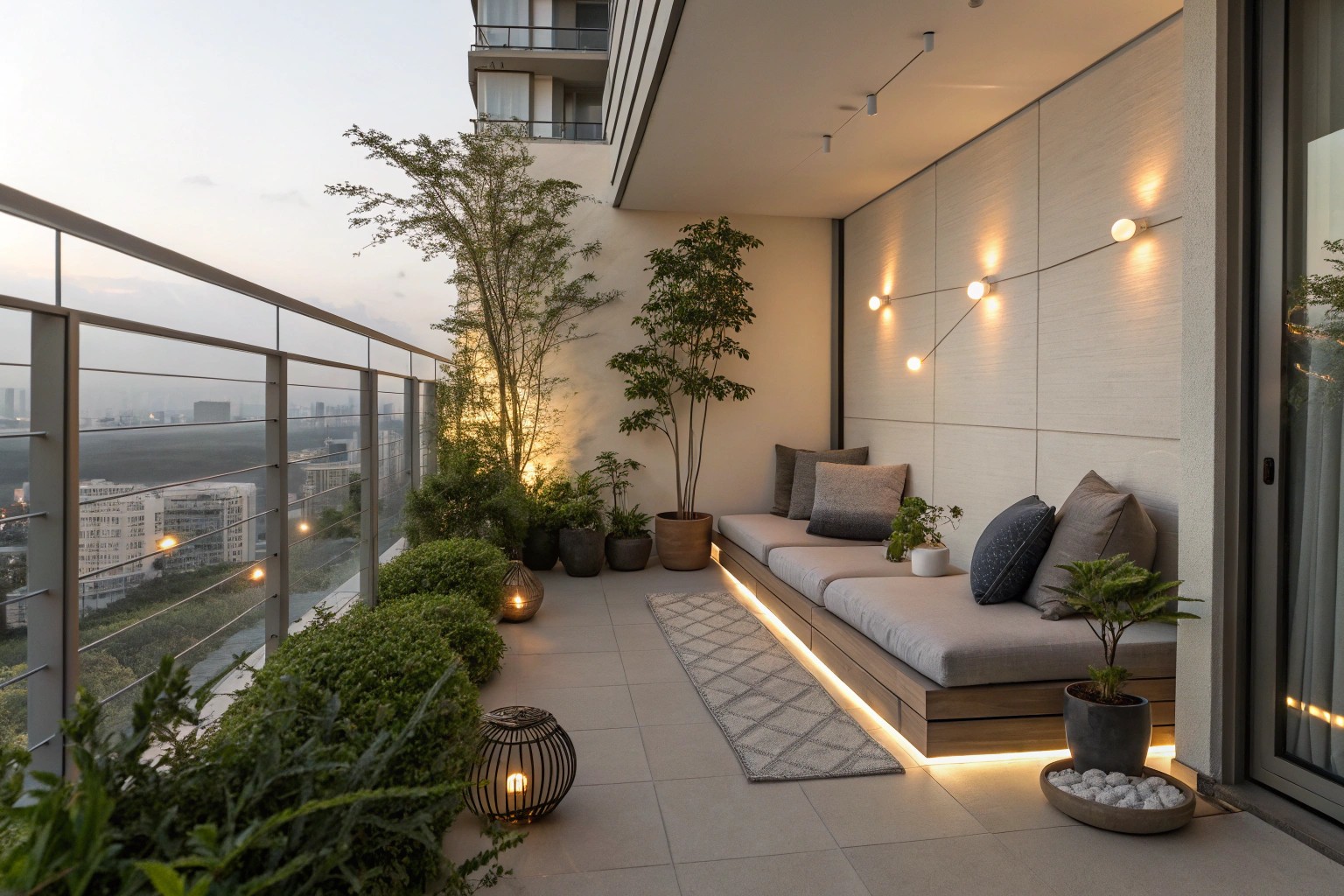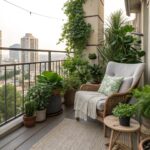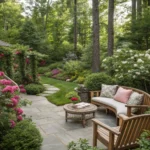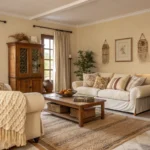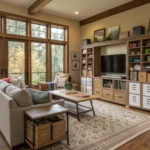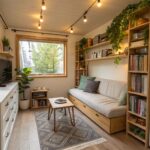Even the smallest urban balcony can become a sanctuary for daily rituals, meditation, and personal renewal. Creating a thoughtful outdoor ritual space requires understanding your environment’s unique conditions while maximizing every square foot through strategic design choices.
The modern urban dweller faces unique challenges in finding space for contemplation and spiritual practice. Balconies, whether expansive terraces or compact apartment ledges, offer an invaluable opportunity to connect with nature and establish meaningful daily rituals. Through careful planning and purposeful design, these elevated outdoor spaces can serve as personal sanctuaries that support meditation, morning coffee ceremonies, evening reflection, or seasonal celebrations.
Understanding Your Balcony’s Ritual Potential
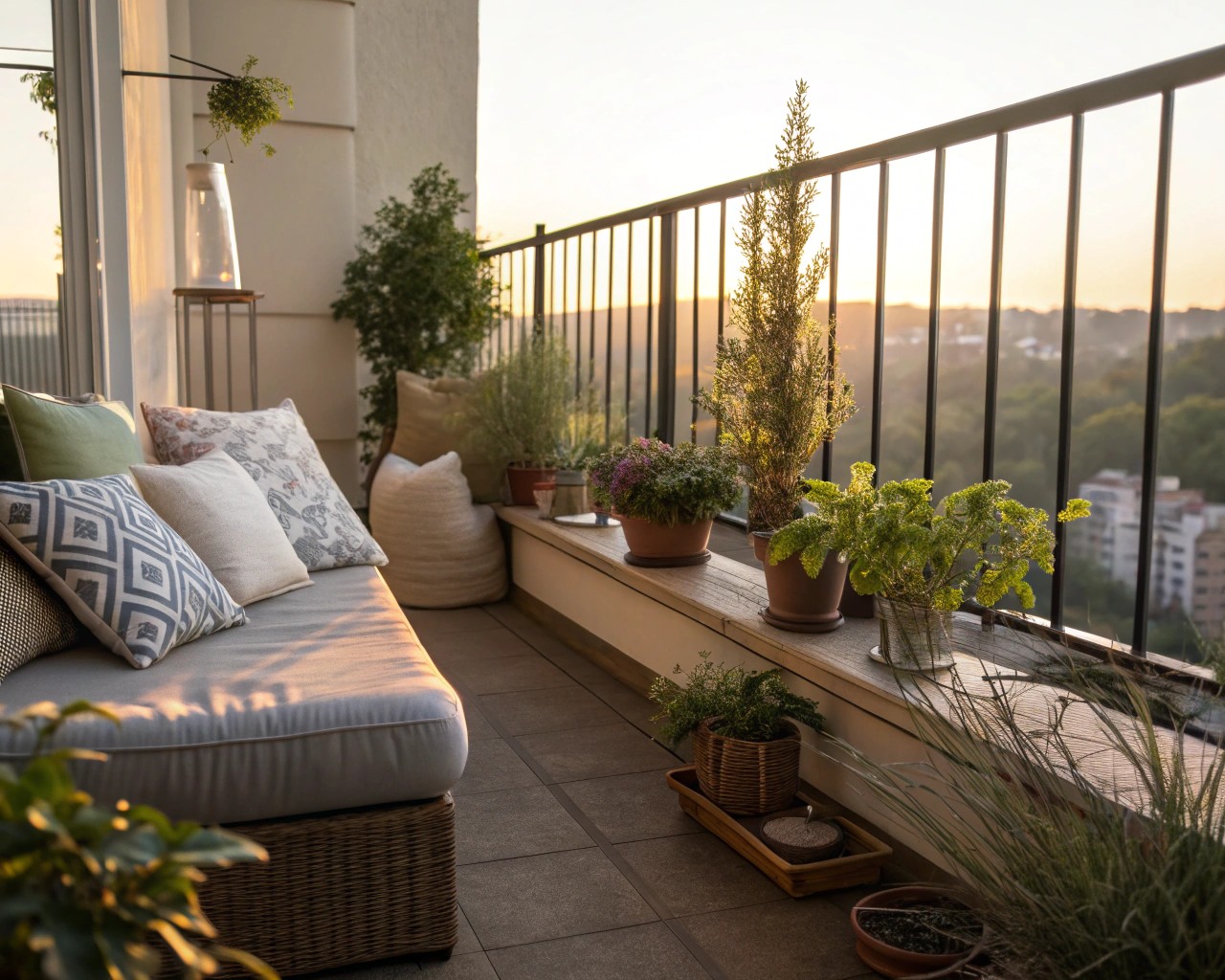
Assessing Environmental Conditions
Before designing your ritual space, conduct a thorough evaluation of your balcony’s microclimate. Light conditions vary dramatically throughout the day and seasons, affecting both plant selection and the timing of your practices. I’ve observed that north-facing balconies often provide gentle, consistent light ideal for morning meditation, while west-facing spaces excel for sunset rituals.
Key factors to document include:
- Daily sun patterns: Track light exposure at 2-hour intervals across different seasons
- Wind exposure: Note prevailing wind directions and intensity at various heights
- Privacy levels: Identify sight lines from neighboring buildings or public areas
- Structural limitations: Understand weight restrictions and mounting possibilities
- Climate protection: Evaluate exposure to rain, snow, and extreme temperatures
Defining Your Ritual Intentions
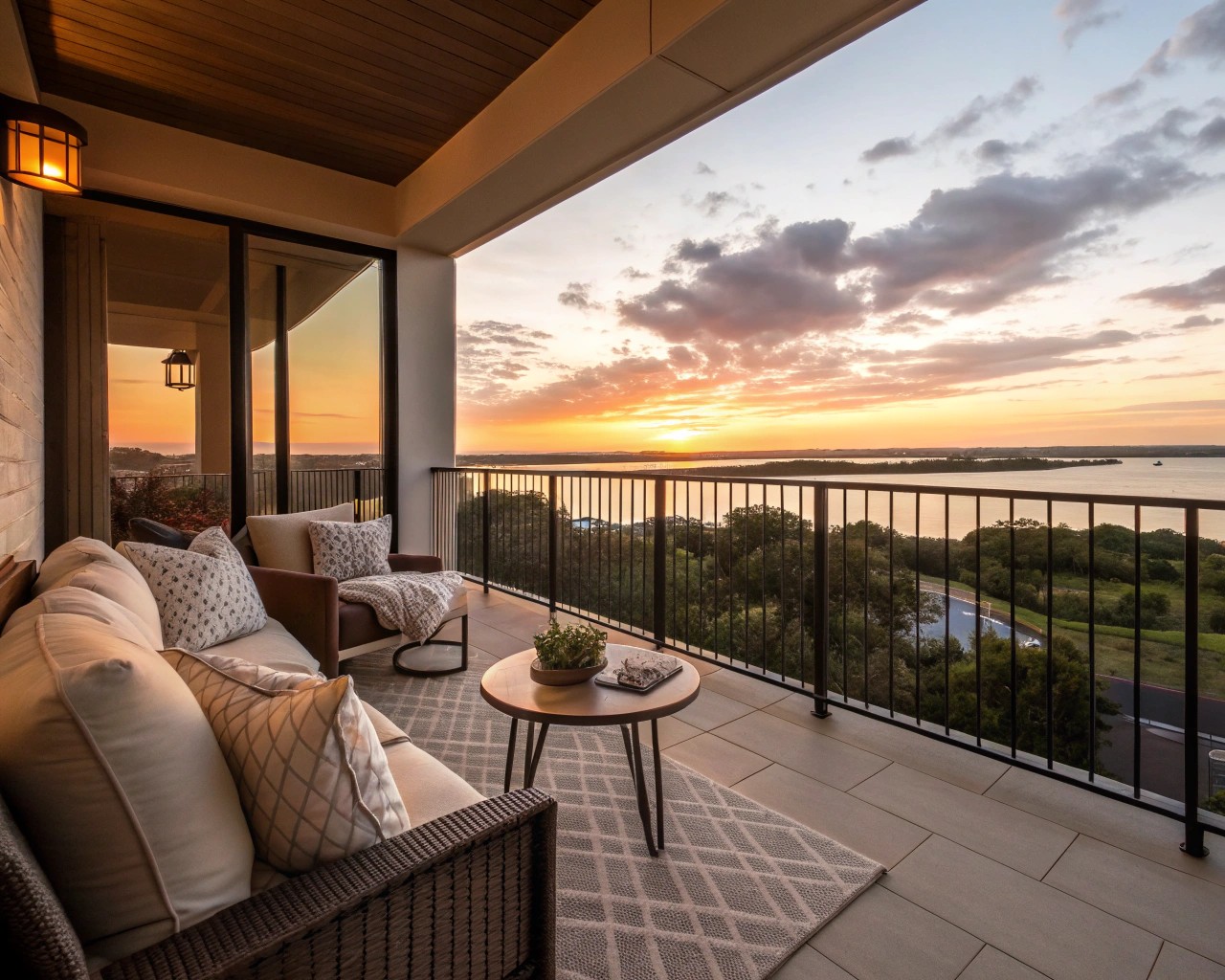
Successful balcony ritual spaces align with your specific spiritual or wellness practices. Consider which activities will anchor your daily or seasonal routines:
Morning Practices
– Sunrise meditation or yoga
– Journaling with coffee or tea
– Gratitude exercises
– Plant care rituals
Evening Ceremonies
– Sunset contemplation
– Candle lighting practices
– Reflection and intention-setting
– Seasonal observances
Seasonal Celebrations
– Equinox and solstice acknowledgments
– Full moon ceremonies
– Harvest celebrations with balcony-grown herbs
Design Principles for Sacred Small Spaces
Creating Zones Within Constraints
Even compact balconies benefit from intentional zoning that separates functional areas while maintaining flow. Effective ritual spaces typically incorporate three primary zones:
| Zone | Purpose | Typical Elements |
|---|---|---|
| Contemplation | Seated meditation, reading | Comfortable seating, cushions, small table |
| Activity | Movement practices, ceremonies | Open floor space, yoga mat storage |
| Nature Connection | Plant care, seasonal displays | Vertical gardens, seasonal decorations |
Vertical Design Strategies

Maximizing vertical space proves essential in small balcony ritual design. Wall-mounted shelving systems can accommodate multiple plant levels while preserving floor space for movement practices. Consider installing a trellis system that supports climbing plants while creating natural privacy screens.
Strategic vertical elements include:
- Living walls: Hydroponic or soil-based vertical garden systems
- Floating shelves: For ritual objects, candles, and small plants
- Hanging planters: Trailing plants that soften harsh architectural lines
- Wall-mounted altars: Compact spiritual display areas
- Privacy screens: Natural or architectural elements for seclusion
Plant Selection for Ritual Spaces
Low-Light Champions for Shaded Balconies
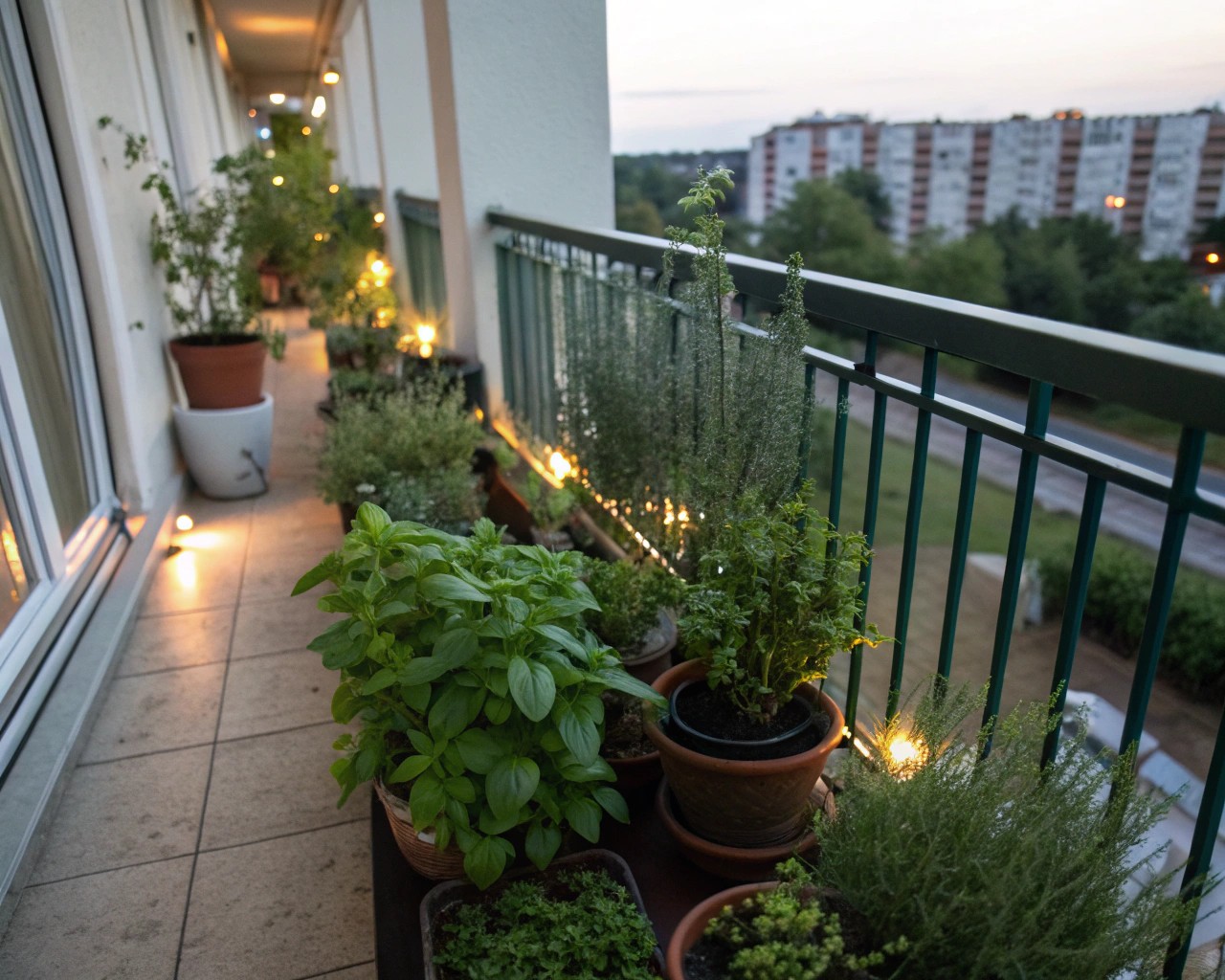
Many urban balconies receive limited direct sunlight, making plant selection crucial for maintaining a living, breathing ritual space. Shade-tolerant plants can thrive in as little as 2-3 hours of direct sun, making them ideal for north-facing or partially obstructed balconies.
Recommended Shade-Tolerant Plants:
- Herbs: Mint, rosemary, basil, thyme – perfect for morning tea rituals
- Flowering Plants: Impatiens, begonias, torenia – add color without full sun requirements
- Foliage Plants: Hostas (in larger containers), ferns, caladiums – create lush backgrounds
- Trailing Plants: English ivy, pothos, string of pearls – soften container edges
Sacred and Symbolic Plant Choices
Incorporating plants with spiritual or cultural significance can deepen your ritual practice. Many traditions associate specific plants with particular energies or intentions:
Meditation and Calm
– Lavender: Promotes relaxation and stress reduction
– Jasmine: Enhances spiritual awareness, especially for evening practices
– Sage: Traditional cleansing and purification plant
Prosperity and Growth
– Basil: Associated with abundance and protection
– Rosemary: Symbolizes remembrance and mental clarity
– Bay leaves: Traditional for manifestation and wish fulfillment
Container Gardening for Ritual Purposes
Container selection significantly impacts both plant health and aesthetic coherence. Weight considerations become critical on balconies, where structural load limits must be respected. Lightweight composite or resin planters offer durability without excessive weight, while terracotta provides traditional appeal for those with adequate structural support.
Container Strategy Guidelines:
- Size appropriately: Larger containers retain moisture longer and provide root stability
- Ensure drainage: All containers must have adequate drainage holes
- Consider mobility: Wheels or lightweight materials allow seasonal rearrangements
- Group purposefully: Arrange containers in odd numbers for visual appeal
- Plan for growth: Select containers that accommodate 2-3 years of plant development
Creating Ambiance and Atmosphere
Lighting for Different Ritual Times
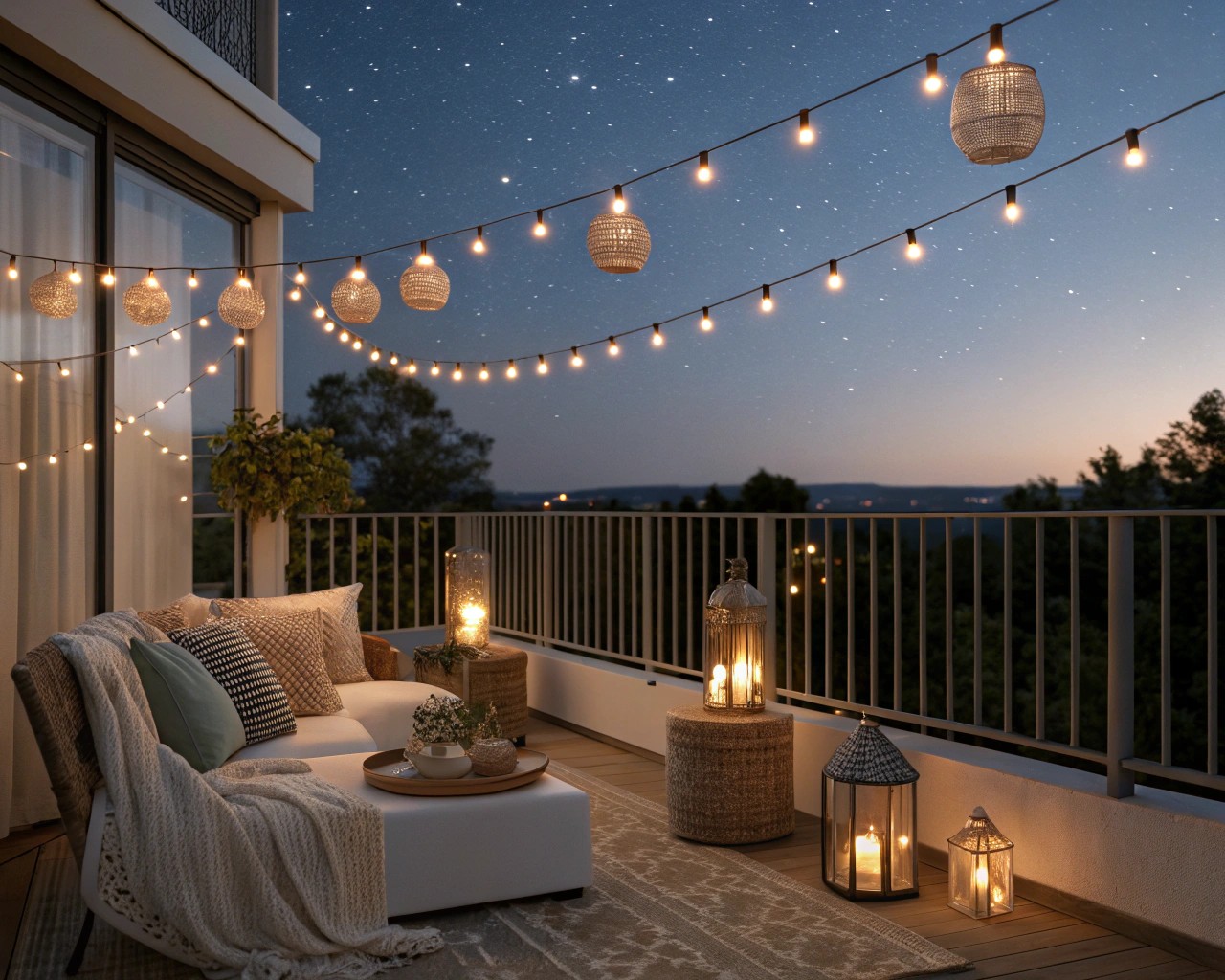
Thoughtful lighting transforms a functional balcony into an enchanting ritual space during morning, evening, and night practices. Layer different light sources to accommodate various activities and moods.
Dawn and Dusk Practices
– Solar-powered LED string lights provide gentle ambient illumination
– Battery-operated lanterns offer portable, wind-resistant options
– Flameless candles create flickering effects without fire hazards in windy conditions
Evening Ceremonies
– Enclosed candle lanterns protect flames while providing meaningful fire elements
– Warm-toned LED strips under seating or planters create subtle ground-level lighting
– Solar spotlights can highlight special plants or ritual objects
Textile Integration for Comfort and Privacy
Weather-resistant textiles serve multiple functions in balcony ritual spaces, providing comfort, privacy, and aesthetic cohesion. Strategic fabric placement can create intimate spaces within larger balconies or add softness to harsh architectural elements.
Practical Textile Applications:
- Outdoor rugs: Define ritual areas and provide comfortable standing surfaces
- Weather-resistant cushions: Enable floor seating for meditation practices
- Shade sails or curtains: Create privacy and wind protection
- Throw blankets: Add warmth for early morning or evening practices
- Prayer flags or banners: Incorporate spiritual symbolism and movement
Furniture Selection and Layout
Multi-Functional Furniture Solutions
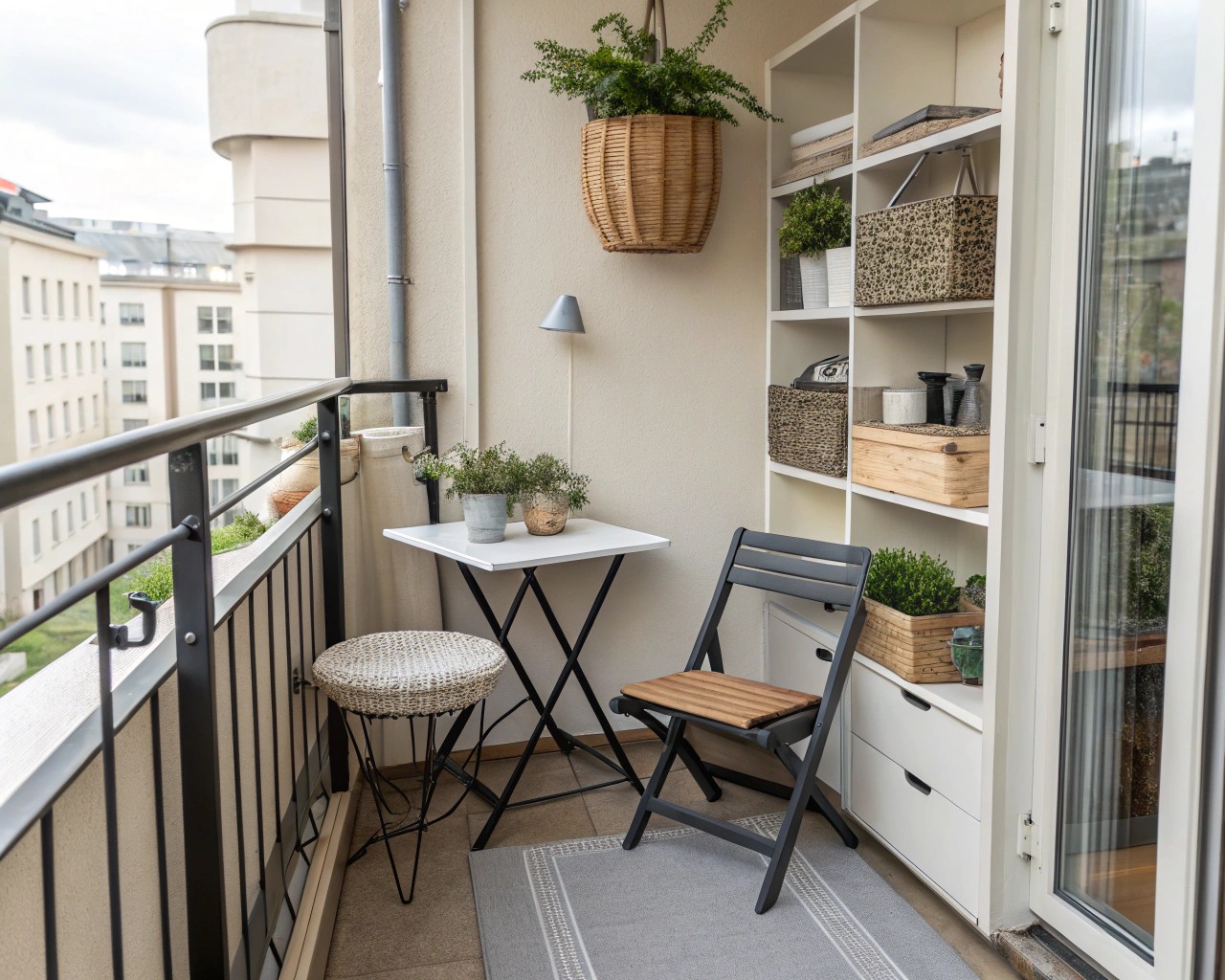
Space efficiency demands furniture that serves multiple purposes without compromising comfort or functionality. Storage ottomans can house meditation cushions, ritual supplies, and seasonal decorations while providing flexible seating options.
Essential Multi-Purpose Pieces:
- Storage benches: Combine seating with weatherproof storage for cushions and supplies
- Folding tables: Provide altar space or writing surfaces that store compactly
- Stackable stools: Offer flexible seating that nests for storage
- Plant stands with shelving: Display plants while providing storage underneath
- Rolling carts: Create mobile ritual stations that can be repositioned as needed
Ergonomic Considerations for Extended Practice
Comfort during extended sitting, meditation, or yoga practice requires attention to ergonomic principles. The height of seating surfaces, back support options, and floor cushioning all impact the sustainability of regular ritual practice.
I’ve found that adjustable furniture works particularly well for balcony spaces, allowing practitioners to modify setups based on the specific ritual or seasonal conditions. Meditation cushions with varying heights accommodate different body types and flexibility levels, while adjustable-back seating supports both upright meditation and relaxed reading positions.
Weather Protection and Seasonal Adaptations
Creating Shelter Without Bulk
Effective weather protection extends the usability of balcony ritual spaces across seasons while maintaining the essential connection to outdoor elements. Retractable solutions offer flexibility, providing shelter when needed while preserving openness during favorable conditions.
Seasonal Protection Strategies:
Spring/Summer
– Retractable awnings for sun and rain protection
– Outdoor umbrellas with weighted bases for flexible shade
– Misting systems for hot climate cooling
Fall/Winter
– Wind screens or temporary panels for cold protection
– Heated outdoor blankets for extended cold-weather practice
– Weather covers for furniture and sensitive plants
– Indoor plant relocation strategies for extreme weather
Plant Care Across Seasons
Maintaining a living ritual space requires adapting plant care practices to seasonal changes and weather extremes. Container plants face particular challenges from temperature fluctuations, requiring protective strategies during harsh conditions.
Winter Protection Methods:
- Insulating container wraps to prevent root freezing
- Temporary greenhouse covers for sensitive plants
- Strategic plant positioning near building walls for warmth
- Reduced watering schedules for dormant plant periods
Practical Implementation Strategies
Budget-Conscious Development
Creating a meaningful balcony ritual space doesn’t require significant financial investment. Prioritizing purchases based on immediate needs while planning for gradual expansion allows for sustainable development over time.
Phase 1: Essential Foundation (Months 1-2)
– One comfortable seating option
– Basic plant containers and starter plants
– Simple lighting solution
– Weather-resistant storage container
Phase 2: Comfort and Function (Months 3-6)
– Additional seating for guests or varied practice positions
– Expanded plant collection with seasonal varieties
– Improved lighting with multiple sources
– Weather protection elements
Phase 3: Refinement and Specialization (Year 1+)
– Specialized furniture for specific practices
– Advanced plant systems like vertical gardens
– Seasonal decoration rotations
– Custom storage and organization solutions
Maintenance and Sustainability
Sustainable ritual spaces require manageable maintenance routines that enhance rather than burden daily practice. Selecting low-maintenance plants and durable materials reduces upkeep while ensuring long-term functionality.
Weekly Maintenance Checklist:
- Plant watering and health assessment
- Surface cleaning and organization
- Weather protection adjustments
- Seasonal decoration updates
Monthly Deep Care:
- Plant fertilization and pruning
- Furniture condition assessment
- Storage organization and inventory
- Ritual object care and replacement needs

